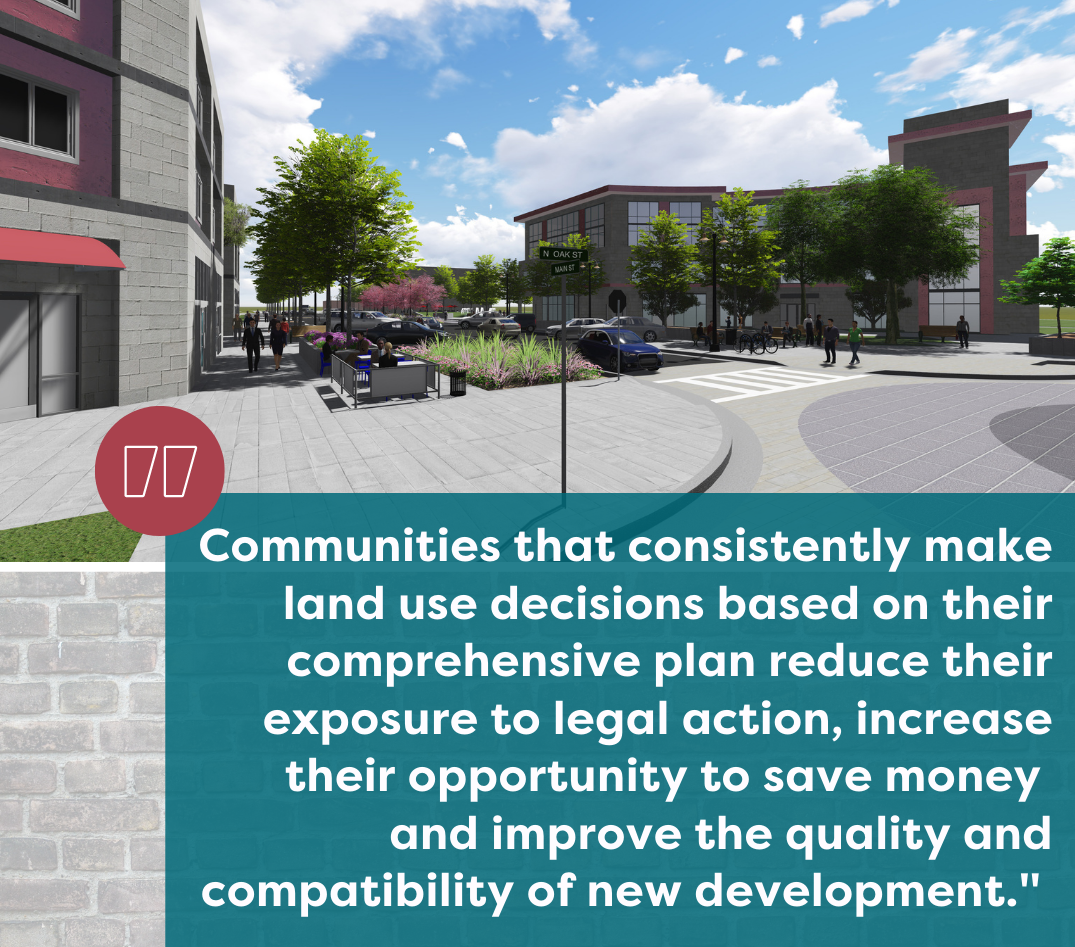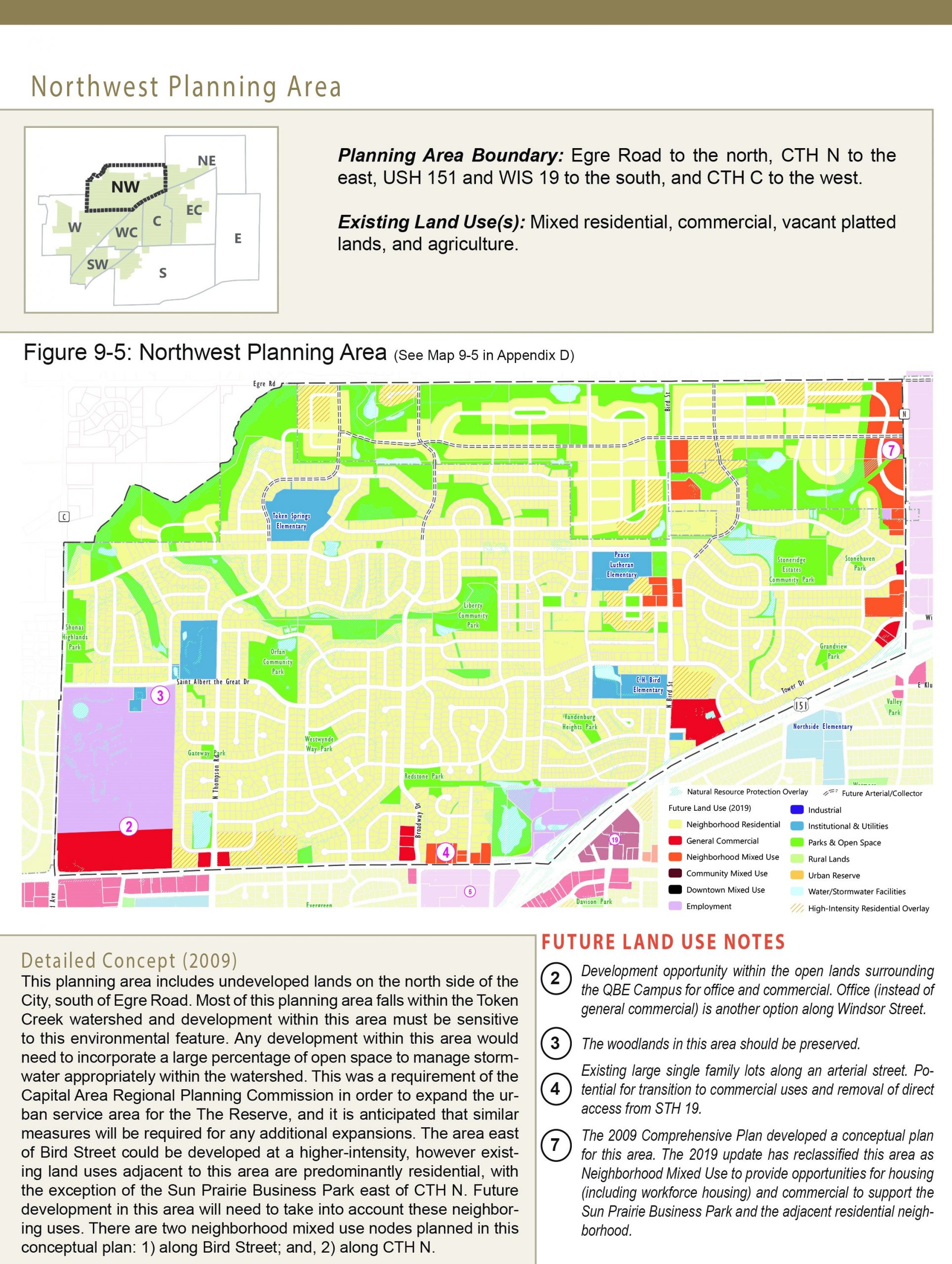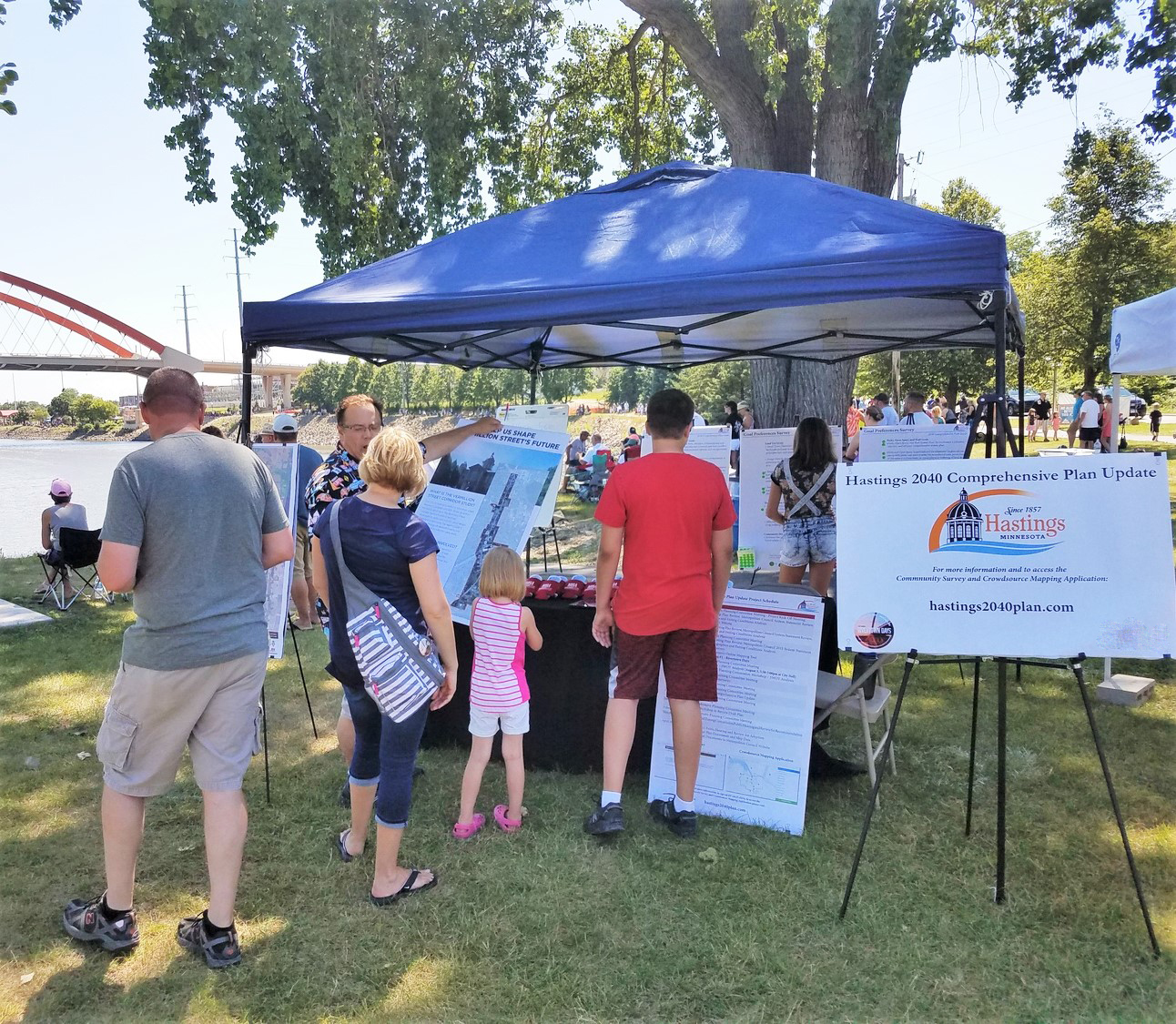A comprehensive plan, at its core, is a long-term guide that captures the vision of what a community wants to be in the future.

Typically written with a 20-year outlook, comprehensive plans are living documents that should be updated from time to time. As a community changes in population makeup or size, or as trends and practices evolve, comprehensive plans must evolve too. Plans should typically be updated at least every ten years. In some places (such as Wisconsin and the Minneapolis-St. Paul Metro Area), 10-year updates are a requirement of state law.
The term comprehensive suggests that these plans are all-inclusive. At a minimum, comprehensive plans provide guidance for the physical development of a community, with an emphasis on land use and the transportation network. Most comprehensive plans — either by desire or as required by state statutes — include guidance on community growth, intergovernmental cooperation, community resources (i.e., agriculture, historical, cultural), infrastructure capacity, housing, public facilities (parks, open space, recreation and trails), and economic development. Increasingly, plans are also providing guidance on sustainability, resilience, hazard mitigation and health. Several of these topics are rising in importance as a result of the COVID-19 pandemic.
Why should a community have a comprehensive plan?
There is great value in developing a comprehensive plan and often the process itself is as valuable as the final document. A comprehensive planning process:
- Allows a community to be proactive (vs. reactive) to issues and changes that arise over time.
- Allows the community to identify factors influencing and shaping the community, and consider how competing interests can be balanced.
- Provides guidance for orderly growth, development and the physical appearance of the community.
- Provides an opportunity to think regionally, especially regarding growth, utilities, community services and transportation.
- Sets up the community for grant funding success, by clarifying needs and demonstrating public support for certain projects or improvements.
- Serves as a guide to orient decisions over time, no matter if there is turnover in leadership, council and/or staff. This provides for stability and predictability.
- Builds consensus and commitment for elected officials and provides guidance for future decision-making.

The most important function of the plan is to serve as a resource manual to assist in the evaluation of land use-related requests and the provision of design recommendations for various types of development. It establishes standards against which all land use decisions in the community should be evaluated. Communities that consistently make land use decisions based on their comprehensive plan reduce their exposure to legal action, increase their opportunity to save money and improve the quality and compatibility of new development.
With all these advantages, why are comprehensive plans not universally embraced?
As professional planners, we sometimes see good work and resources poured into the development of a comprehensive plan, only to have it sit in the community archives, collecting dust. Some small and/or low-growth communities are choosing not to create or maintain a valid plan, even though absence of a valid plan can put their zoning and land division ordinances at risk in some places.
The reasons for neglecting good planning are varied. There can be limited political will to invest in planning. Sometimes there is a perception that the planning process will be arduous or fruitless. Our decades of work on many dozens of plans inform the following critiques of comprehensive plans (including, full disclosure, some of our own work from earlier in our careers):
Too Long / Too Detailed / Poorly Organized. Comprehensive plans have a tendency to reach 100+ pages with the important policies and actions lost in the middle of the document. Background information, data and public input are all essential to identifying the community goals; however, that material should not obscure the policy content of the plan. An effective plan document is easily understood no matter if you are an elected official, developer or resident of the community. A succinct, illustrative executive summary hitting on the key goals, policies and actions is a great complement to the full plan document.
Lack of Implementation. Many comprehensive plans have few explicit implementation strategies. In some states (such as Wisconsin and Iowa), an implementation chapter is required; however, its contents typically are limited to procedural requirements and a list of actions. The implementation strategy should describe each action, define a timeframe to complete the action, identify a lead agency/department to move the action forward, and establish a process to evaluate progress towards completing the action. This implementation accountability can be as simple as drafting an annual report to identify actions completed or in progress, with consideration to reprioritizing the remaining actions. This report can prove to be very beneficial during the annual capital improvement planning and budgeting process.
Lack of Community Buy-in. Public participation is the key to the creation of a successful comprehensive plan, and the means to collect resident opinions has evolved beyond attending a meeting at a municipal building. People’s lives are busy and their time is precious. Today’s technology enables virtual open-house conversations, online surveys, GIS-based crowdsourcing applications and one-on-one dialogues at community events that are changing the way planners collect feedback and shape participatory planning documents.

There are a multitude of places and means to collect citizen input. Meeting community groups where they are — such as Lions and Rotary clubs, schools, churches, non-profits and senior living facilities — offers another opportunity to gain perspective from those who may not be able to attend a traditional town-hall-style meeting. More importantly, we know that a broad spectrum of voices is essential to the creation of plans that work for every sector of the community. Without community support, elected officials may find it difficult to have the political will to move forward with the plan’s initiatives.
Lack of Elected Official Buy-in. The most successful and useful plans result when elected officials and other community leaders express a vested and honest interest in the creation of a plan. This “vested interest” carries forward to actively using the plan to guide community decisions. Sometimes there is a misperception that planning and property rights are in opposition to each other. In fact, a good plan and the political will to follow that plan serves to protect the interests of property owners by making land development decisions more predictable and less subject to the whims of changing leadership or a handful of vocal participants in the review process. A plan supported by a strong public process can enable elected officials to make hard decisions when controversies arise.
Where do we start?
Communities struggling to build political will for planning might start with a strategic planning workshop to identify critical issues. Or, even more simply, a council presentation and discussion with a planner about the advantages of a good process and an effective plan document. MSA planners are happy to sit down with you to discuss your experience with comprehensive planning and an approach that works in your community. Contact us today to get the conversation started.
